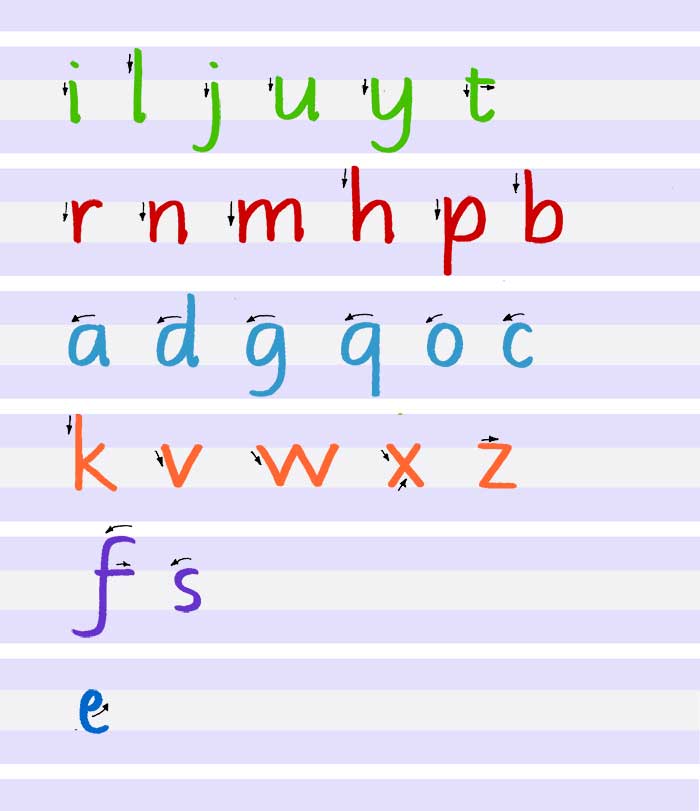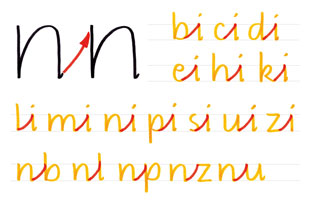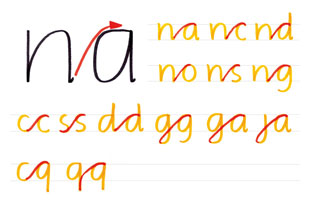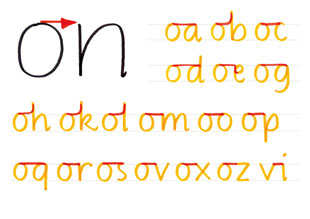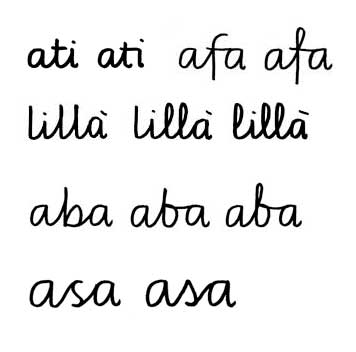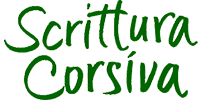Alphabet ductus and Joins
The Italica alphabet can be divided into six groups:
Green group – Masts and wave letters
Red group – Bouncing letters
Light blue group - Counter-clockwise and oval letters
Orange group – Zig-zag letters
Violet group - Double curved letters
Dark blue group – Spiral letters
To write Italica in cursive, simply connect the unjoined letters with the appropriate diagonal or horizontal joins so you could write words almost without lifting your pen from the paper.
Remember that the joins are only used as links between the letters inside a word. You never start a word with a join.
There are some letters, such as the r, which are better to leave unjoined until children/learners have a full grasp of how cursive writing works.
Nearly all the letters are written with a single pen stroke, without lifting the pen off the paper. The exceptions are: f i j t x
Ductus – the correct way to write letters
Mast and wave letters: i l j u y t
The pen always starts at the top, comes straight down forming a mast and at the bottom either stops or curves.
Bouncing letters: r n m h p b
The movement of the pen is like a ball that falls straight down and then bounces forward in a curve.
Counter-clockwise or oval letters: a d g q o c
The pen starts at the top and moves counter-clockwise. In the letters a d g q it makes an oval or egg shape, and then moves up and finally down to make an ascender (d) or down to make a descender (g q).
Zig-zag letters: k v w x z
These letters are made with diagonal strokes. The only exception to the rule that letters are made starting at or near the top is the x where the second stroke starts at the bottom so that it can be joined horizontally to the following letter and so writers don’t have to lift their pen.
Double curved letters: f s
The letters f and s have two curves. f can also be found with one curve and a vertical desender.
The spiral letter: e
The only letter in this group is e. Start in the middle and make an counter-clockwise spiral ending at the bottom.
Joins
In the basic Italica alphabet there are only two types of joins: either horizontal or diagonal.
Most letters are connected to the one that follows with a diagonal join. The letters o f v w x are connected with a horizontal join. The letter t can be connected with either a horizontal or a diagonal join. During the transitional phase from unjoined to cursive writing, some children/learners make very angular, diagonal joins, for example, after the l . This can result in very spiky and harsh-looking writing which is not easy to produce. In this case, time should be taken to help them to produce a rounder pen stroke for a more flowing join.
Difficulties and options
When practicing cursive writing, it becomes clear that some children may have difficulty joining certain letters such as s b e f. If this is the case, alternative cursive letters may be introduced.
- The upper curve of the s can be removed because some children find the double curve difficult to produce.
- The round part of the b can be made upwards from the bottom (counter-clockwise). This further distinguishes it from the d, which may help dyslexic children.
- The f can be made with a top-loop, so it joins more easily.
Notes on the letters l and h
In line with the basic principle that lower case letters do not change shape when they join up, l and h do not have loops. However, considering that many children/learners do write these letters in cursive with loops, I suggest that this interpretation should not be corrected, if it does not interfere with legibility..
AUTORE
Monica Dengo
RELATED PAGES
